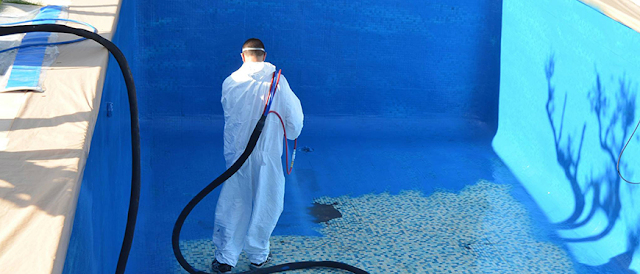Polyurea Coatings: A Durable Protection Solution
 |
| Polyurea Coatings |
Introduction to Polyurea
Polyurea is a type of elastomer coating formed by the reaction of an isocyanate component and a resin blend component. This process is known as chemical cross-linking and results in a very rapid curing time often wAithin seconds. The properties of polyurea make it highly useful for protecting surfaces from corrosion and weathering. Let's explore the characteristics and applications of this innovative coating material.Chemical Composition
At a molecular level, polyurea is composed of long polymer chains made up of alternating hard (urethane) and soft (urea) segments. The isocyanate portion typically used is an aromatic compound like MDI (diphenylmethane diisocyanate). The resin portion contains amine chain extenders and polyether or polyester polyols. During the mixing and spray application process, the isocyanate reacts with the resin through hydrourea and allophanate linkages resulting in its elastomeric qualities.
Physical Properties
Some of the key physical attributes of polyurea that make it desirable for protection include:
- High abrasion and chemical resistance - Strong resistance to wear, oils, greases, deicers and solvents.
- Flexibility over a wide temperature range (-50 to 250°F) - Remains flexible unlike rigid coatings.
- Fast dry and recoat times - Rapid application allows for quick project completion.
- Excellent adhesion to surfaces - Bonds very strongly to metals, wood, concrete and more.
- Waterproofing - Forms an impermeable membrane resistant to moisture penetration.
- UV stability - Maintains integrity when exposed to sunlight.
Protective Applications
Given its durability and versatility, polyurea coatings have found use in numerous end-use markets:
Infrastructure - Used to refurbish bridges, water pipes, offshore oil rigs by protecting from corrosion under insulation. The material stretches to bridge gaps and cracks.
Waterproofing - Applied to rooftops, foundations, tunnels, water retaining structures to prevent water seepage inside. Also employed in pool deck and parking deck coatings.
Industrial - Commonly used as a liner in dumpsters, trucks, railroad cars and more to facilitate easy cleaning. Provides chemical containment in manufacturing facilities.
Military - Sprayed on vehicles, equipment and battle gear as a protective barrier from hazards like punctures, impact and fire. Has saved lives of soldiers.
Sports - Applied on artificial turf and tracks to deliver longer lifespan. Used in bike trails and skate parks for its shock absorption.
Additional Applications
Along with the above sectors, polyurea technology is gaining attention in various specialized uses:
- Forestry - Durable enough for heavy duty logging and mulching equipment operation.
- Mining - Protects machinery from abrasive conditions and UV degradation underground.
- Landfills - Forms leak-proof barrier at bottom and slopes of waste disposal sites.
- Wire & Cable - Insulates wires, transmission lines from environmental damage.
- Shipbuilding - Prevents corrosion of hulls and decks, seamless application on irregular surfaces.
Advancements in Technology
Continuous R&D efforts are helping Polyurea Coating evolve to meet ever complex performance needs. Some developments include:
- Hybrids - Blending with other materials like epoxy, methyl methacrylate results in hybrid polyureas with tailored properties.
- Conductive versions - Addition of carbon fiber or copper makes the coating electrically conductive.
- Self-healing ability - Auto-repair of minor damages through reversible hydrogen bonding.
- 3D spraying - Robotic application over complex geometries with precise control and minimum overspray.
- Renewable content - Biobased polyether polyols from plant oils in the chemical formulation.
In summary, polyurea coatings have emerged as a premium protective solution across diverse protective applications due to their corrosion resistance, strong bonding, flexibility, fast cure, moisture resistance and other key attributes. Continuous product advancements will see this technology playing an increasing role safeguarding infrastructure and industrial assets from hazards in the future.



Comments
Post a Comment